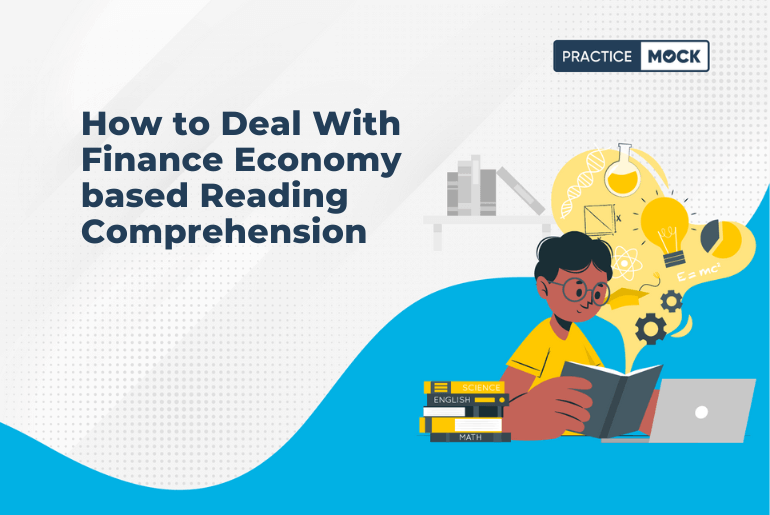Finance Economy Reading Comprehension: Reading comprehension exercises focused on finance and the economy can be daunting, but with the right approach, you can decipher complex passages and answer questions effectively. This article provides strategies to tackle finance-based reading comprehension, enhancing your comprehension skills and boosting performance in related examinations.
Understand Financial Jargon:
Finance and economy texts often contain specialized jargon. Prioritize understanding key terms to unravel the context. Familiarize yourself with terms like GDP, inflation, fiscal policies, and economic indicators. A solid grasp of terminology is the foundation for comprehending intricate financial passages.
Identify Main Ideas:
Begin by identifying the main ideas within the passage. Look for the author’s central argument or theme. This initial step aids in creating a mental roadmap of the content, making it easier to navigate through supporting details and specific information.
Analyze Data and Figures:
Finance passages frequently include statistical data and figures. Develop the ability to interpret graphs, charts, and tables swiftly. Understand how these elements relate to the text, as they often provide crucial insights that contribute to a comprehensive understanding of the passage.
Recognize Cause-and-Effect Relationships:
In finance-based reading comprehension, recognizing cause-and-effect relationships is pivotal. Understand how economic events or policy decisions can impact various factors. This skill aids in anticipating the author’s perspective and effectively answering questions about potential outcomes.
Practice Time Management:
Finance passages can be time-consuming, and effective time management is essential during exams. Practice reading passages within a set time limit to enhance your speed. This ensures you can carefully read and comprehend the content while leaving ample time for answering questions.
Utilize Contextual Clues:
When faced with unfamiliar terms or concepts, use contextual clues to deduce their meanings. The surrounding sentences often provide context that aids in deciphering the intended meaning, allowing you to maintain the flow of comprehension without getting bogged down by every unfamiliar term.
Summarize Each Paragraph:
After reading each paragraph, summarize its main idea. This practice not only reinforces your understanding but also serves as a reference point when answering questions. A concise summary helps you stay focused and quickly locate relevant information during the question-solving phase.
Practice with Varied Passages:
Diversify your practice materials by working with a range of finance and economy passages. This exposes you to different writing styles, topics, and complexities, preparing you for the unpredictability of exam content. The more exposure you have, the more adept you become at handling diverse reading comprehension challenges.
Review Incorrect Answers:
In your practice sessions, focus on understanding why you got certain questions wrong. Was it a misinterpretation of the passage, a lack of clarity on financial concepts, or a time management issue? Regularly reviewing your mistakes enhances your comprehension skills and fine-tunes your approach to finance-based reading comprehension.
Conclusion:
Effectively dealing with finance and economy-based reading comprehension involves a combination of language proficiency, financial literacy, and strategic reading skills. By understanding financial terminology, identifying main ideas, analyzing data, recognizing cause-and-effect relationships, practicing time management, using contextual clues, summarizing paragraphs, working with varied passages, and reviewing incorrect answers, you can approach finance-based reading comprehension with confidence and excel in related examinations.
- Sign Up on Practicemock for Updated Current Affairs, Topic Tests and Mini Mocks
- Sign Up Here to Download Free Study Material
Free Mock Tests for the Upcoming Exams
- IBPS PO Free Mock Test
- RBI Grade B Free Mock Test
- IBPS SO Free Mock Test
- NABARD Grade A Free Mock Test
- SSC CGL Free Mock Test
- IBPS Clerk Free Mock Test
- IBPS RRB PO Free Mock Test
- IBPS RRB Clerk Free Mock Test
- RRB NTPC Free Mock Test
- SSC MTS Free Mock Test
- SSC Strenographer Free Mock Test
- GATE Mechanical Free Mock Test
- GATE Civil Free Mock Test
- RRB ALP Free Mock Test
- SSC CPO Free Mock Test
- AFCAT Free Mock Test
- SEBI Grade A Free Mock Test
- IFSCA Grade A Free Mock Test
- RRB JE Free Mock Test
- Free Banking Live Test
- Free SSC Live Test



